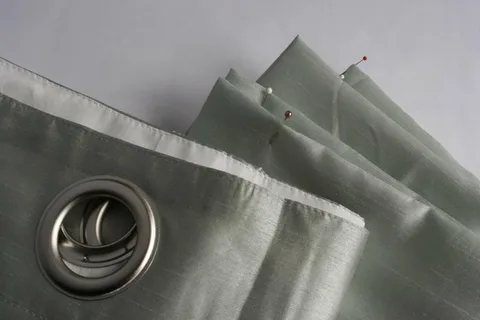Curtains in commercial spaces serve both functional and aesthetic purposes, contributing significantly to the ambiance, privacy, and overall design of the environment. This article explores various aspects of using curtains in commercial settings, including their types, materials, installation considerations, and design tips.
Types of Curtains for Commercial Spaces
Commercial spaces often require curtains that are durable, easy to maintain, and can withstand frequent use. Here are some common types:
- Heavy-Duty Drapery: Made from thick fabrics like velvet, heavy-duty drapery is ideal for hotels, theaters, and conference rooms where light control and sound insulation are essential.
- Sheer Curtains: These lightweight, translucent curtains are suitable for restaurants, retail stores, and offices where natural light diffusion and a softening effect are desired without sacrificing visibility.
- Blackout Curtains: Designed to block out light entirely, blackout curtains are perfect for cinemas, hotels, and offices needing optimal light control for presentations or sleeping areas.
- Motorized Curtains: Often used in high-end hotels, conference centers, and modern offices, motorized curtains offer convenience and control through automated opening and closing mechanisms.
- Cubicle Curtains: Used in healthcare facilities, cubicle curtain ( curtain in Dubai ) provide privacy around patient beds or treatment areas while maintaining a sterile environment.
Materials and Fabric Selection
Choosing the right fabric is crucial for curtains in commercial spaces, considering factors such as durability, maintenance requirements, fire safety regulations, and aesthetic appeal:
- Durability: Fabrics like polyester blends or vinyl are durable and resistant to wear and tear, making them suitable for high-traffic areas.
- Fire Safety: Curtains in commercial settings must meet fire safety standards (e.g., NFPA 701), ensuring they are flame-retardant or fire-resistant where required by building codes.
- Maintenance: Easy-to-clean fabrics such as polyester and cotton blends are preferable for commercial environments where regular cleaning is necessary to maintain hygiene standards.
- Aesthetic Appeal: The fabric’s texture, color, and pattern should align with the interior design theme and branding of the commercial space, enhancing its overall appeal.
Installation Considerations
Installing curtains in commercial spaces involves several considerations to ensure functionality, safety, and aesthetic coherence:
- Hardware: Choose robust curtain rods, tracks, or motorized systems capable of supporting the weight of commercial-grade curtains.
- Safety: Ensure proper anchoring and installation to prevent accidents, especially in public areas where curtains may be frequently opened or closed.
- Accessibility: Motorized curtains provide convenience and accessibility, allowing easy adjustment for different lighting and privacy needs.
- Customization: Tailor the installation to fit specific space requirements, such as curved tracks for irregularly shaped windows or partitioning large areas.
Design Tips for Using Curtains in Commercial Spaces
Effective use of curtains can transform the ambiance and functionality of commercial interiors:
- Create Zones: Use curtains to partition large spaces into smaller functional areas, such as dividing a conference room into breakout areas or separating dining sections in a restaurant.
- Enhance Acoustics: Heavy drapes or layered curtains can improve acoustics by dampening noise, making them suitable for auditoriums, theaters, and conference rooms.
- Highlight Features: Draw attention to architectural features or focal points within the space by framing them with curtains in complementary colors or textures.
- Brand Integration: Incorporate curtains in colors or patterns that reflect the brand identity and design ethos of the commercial establishment, reinforcing brand image.
- Seasonal Adaptation: Consider using curtains that can be easily changed or layered to adapt to seasonal changes or special events, providing versatility in decor.
Conclusion
Curtains play a vital role in commercial spaces beyond mere decoration, offering practical benefits such as privacy, light control, acoustical enhancement, and brand integration. By selecting appropriate types, materials, and designs, and ensuring proper installation, curtains can significantly enhance the functionality and aesthetic appeal of various commercial environments, from hotels and restaurants to offices and healthcare facilities. Understanding these considerations allows designers and facility managers to leverage curtains effectively in creating inviting, functional, and visually appealing commercial spaces.









